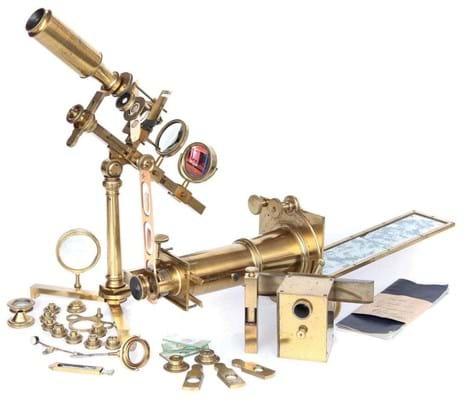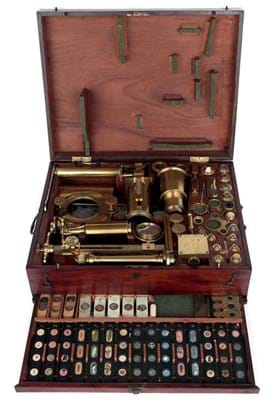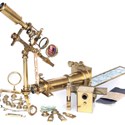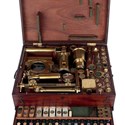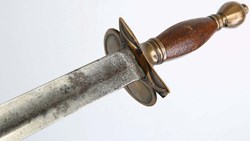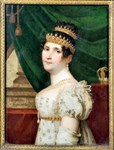The top lot at £88,000 was a rare George Adams variable microscope (as reported in ATG No 2341), but plenty of other eye-catching items emerged across the April 26-27 sale that recorded a hammer total of £371,000.
An unusual single artistic microscope slide showing a bouquet of flowers within a circular garland took £1200. The floral image is actually made up of more than a thousand insect scales arranged to form the delicate picture.
The c.1880 opaque white glass slide by Clark & Page came in a leather-covered velvet and silk-lined case and is labelled as containing 1200 insect scales and described as ‘Entomology Design in Insect Scales & Diatoms Reg No. 32’.
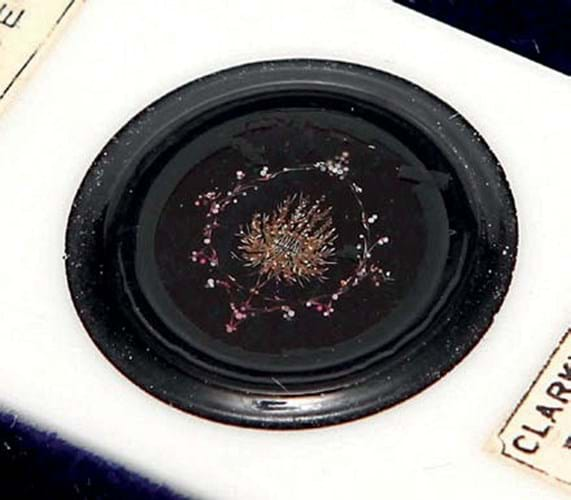
Glass slide by Clark & Page – £1200.
Also in the microscope section of the sale, a Jones Improved and Solar Microscope Compendium, c.1795, sold at £16,000 to a bidder on thesaleroom.com.
Including all manner of accessories and an array of original opaque and transparent slides, this is the largest and most complete set by Jones that the auctioneers had seen. It was signed just W Jones for William Jones (1763-1831), perhaps in c.1782 when Jones appears to have set up business by himself for a couple of years.
Early Leica
In the camera section of the sale the highlight was, according to specialist Jonathan Brown, an “early example with the original features” – a Leica Model Ia Elmax.
This example, an early serial number of 360 for c.1925, was pictured in the second edition of Dennis Laney’s Leica Collector’s Guide. It drew interest from the phone and an underbidder in the room before it was secured by an overseas internet buyer for £15,000.
Brown said rare camera lenses also performed well. Around 12 lenses made a total of £70,000, largely snapped up by the collectors in Hong Kong and China who are tending to dominate the camera market.
A very early Xpres lens by the British firm Ross with the serial number 201869 sold at £10,000.
This general-purpose triplet lens, using three glass elements cemented together, was first introduced c.1914.


